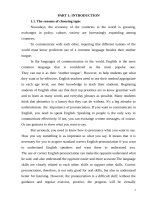Retaining students in grade docx
Bạn đang xem bản rút gọn của tài liệu. Xem và tải ngay bản đầy đủ của tài liệu tại đây (579.02 KB, 113 trang )
This document and trademark(s) contained herein are protected by law as indicated in a notice appearing later in
this work. This electronic representation of RAND intellectual property is provided for non-commercial use only.
Unauthorized posting of RAND PDFs to a non-RAND Web site is prohibited. RAND PDFs are protected under
copyright law. Permission is required from RAND to reproduce, or reuse in another form, any of our research
documents for commercial use. For information on reprint and linking permissions, please see RAND Permissions.
Limited Electronic Distribution Rights
This PDF document was made available from www.rand.org as a public
service of the RAND Corporation.
6
Jump down to document
THE ARTS
CHILD POLICY
CIVIL JUSTICE
EDUCATION
ENERGY AND ENVIRONMENT
HEALTH AND HEALTH CARE
INTERNATIONAL AFFAIRS
NATIONAL SECURITY
POPULATION AND AGING
PUBLIC SAFETY
SCIENCE AND TECHNOLOGY
SUBSTANCE ABUSE
TERRORISM AND
HOMELAND SECURITY
TRANSPORTATION AND
INFRASTRUCTURE
WORKFORCE AND WORKPLACE
The RAND Corporation is a nonprofit research
organization providing objective analysis and effective
solutions that address the challenges facing the public
and private sectors around the world.
Visit RAND at www.rand.org
Explore RAND Education
View document details
For More Information
Browse Books & Publications
Make a charitable contribution
Support RAND
This product is part of the RAND Corporation technical report series. Reports may
include research findings on a specific topic that is limited in scope; present discus-
sions of the methodology employed in research; provide literature reviews, survey
instruments, modeling exercises, guidelines for practitioners and research profes-
sionals, and supporting documentation; or deliver preliminary findings. All RAND
reports undergo rigorous peer review to ensure that they meet high standards for re-
search quality and objectivity.
Retaining Students
in Grade
Lessons Learned
Regarding Policy Design
and Implementation
Julie A. Marsh, Daniel Gershwin,
Sheila Nataraj Kirby, Nailing Xia
Prepared for the New York City Department of Education
EDUCATION
The RAND Corporation is a nonprofit research organization providing objective analysis
and effective solutions that address the challenges facing the public and private sectors
around the world. RAND’s publications do not necessarily reflect the opinions of its
research clients and sponsors.
R
®
is a registered trademark.
© Copyright 2009 RAND Corporation
Permission is given to duplicate this document for personal use only, as long as it is unaltered
and complete. Copies may not be duplicated for commercial purposes. Unauthorized
posting of RAND documents to a non-RAND Web site is prohibited. RAND
documents are protected under copyright law. For information on reprint and linking
permissions, please visit the RAND permissions page (
permissions.html).
Published 2009 by the RAND Corporation
1776 Main Street, P.O. Box 2138, Santa Monica, CA 90407-2138
1200 South Hayes Street, Arlington, VA 22202-5050
4570 Fifth Avenue, Suite 600, Pittsburgh, PA 15213-2665
RAND URL:
To order RAND documents or to obtain additional information, contact
Distribution Services: Telephone: (310) 451-7002;
Fax: (310) 451-6915; Email:
The research described in this report was prepared for the New York City Department of
Education and conducted within RAND Education, a unit of the RAND Corporation.
- iii
-
PREFACE
Many states and districts are moving toward test-based requirements for promotion at key
transitional points in students’ schooling careers, thus ending the practice of “social promotion”—
promoting students without regard for how much they have learned. The rationale for retention is
that repetition of the grade will give students an additional year to master the academic content
they failed to master the previous year, and, thus, students should be less at risk for failure when
they go on to the next grade. Opponents of grade retention argue that prior research has shown
that grade retention disproportionately affects low-income and minority children and is associated
with low self-esteem, problem behaviors, and an increased risk of dropping out of school.
In 2003–2004, the New York City Department of Education (NYCDOE) implemented a new
promotion and retention policy for 3rd-grade students in New York City (NYC) public schools. The
policy was extended to grade 5 in 2004–2005, grade 7 in 2005–2006, and grade 8 in 2008–
2009. NYCDOE asked the RAND Corporation to conduct an independent longitudinal evaluation
of the 5th-grade social promotion policy and to examine the outcomes for two cohorts of 3rd-grade
students. This four-year study—conducted between March 2006 and August 2009—examined (1)
policy implementation, factors affecting implementation, and implementation progress over time; (2)
the impact of the policy on student academic and socioemotional outcomes; and (3) the links
between implementation and desired outcomes.
The study included a review of states and districts (other than NYC) that had implemented grade
retention policies that were similar to the NYC promotion policy, featuring interviews with state
and district officials regarding their successes, challenges, and lessons learned regarding policy
design and implementation. This report presents the results of that effort and is one in a series of
reports documenting the findings of the evaluation of the NYC promotion policy. Xia and Kirby
(2009) and McCombs, Kirby, and Mariano (2009) provide a review of the literature on grade
retention and findings from the overall evaluation, respectively. These three reports should interest
policymakers, practitioners, and researchers involved in designing, implementing, or studying
interventions to improve outcomes for low-performing students.
This research was conducted by RAND Education, a unit of the RAND Corporation.
- v
-
CONTENTS
Preface iii
Tables vii
Summary ix
Acknowledgments xv
Abbreviations xvii
I. Introduction 1
Purpose of This Report 2
What We Know About the Effects of Grade Retention and Promotion Policy Design and
Implementation 3
Effect of Grade Retention on Proximal and Future Outcomes 3
Effect of Supportive Interventions on Student Achievement 4
Organization of This Report 5
2. A Brief Overview of NYC’s Promotion Policy 7
Criteria for Promotion 7
Key Components 8
3. Sample Selection and Methodology 11
4. Overview of State and District Promotion and Retention Policies and Programs 17
Design Features 17
Identification and Support for Students at Risk of Retention 22
Accounting for Variation in Policies 25
5. Perceived Challenges and Promising Strategies 27
Building and Sustaining Stakeholder Support 27
Investing in Strategies to Build and Sustain Stakeholder Support 27
Preparing for and Gradually Phasing in the Policy 30
Lack of Parent Understanding and Support 31
Beliefs and Attitudes About Retention 32
Pressure to Revise and Repeal Policies 33
- vi
-
Setting Criteria for Promotion 35
Basing Promotion on Reliable Measures of Student Performance 35
Providing Local Discretion and Alternatives Without Undermining the Policy 37
Strategies to Manage the “Loophole” Tension 40
Providing and Aligning Incentives for Schools and Students 43
Identifying At-Risk Students 46
Providing Student Interventions and Support 50
Providing Sustained, Consistent, and High-Quality Support 50
Ensuring Continuity and Concentrated Support Through Summer School Programs 56
Student Mobility 58
Lack of Funding 58
Building Capacity and Staffing 59
Providing Teacher Professional Development 59
Staffing Remediation Programs and Gateway Grades 61
Monitoring of Implementation and Outcomes 63
Inability to Adequately Monitor Implementation and Effects 63
Constraining Factors 65
Summary 66
6. Conclusions 69
Summary of Findings 69
Lessons to Consider 70
Appendix. Supporting Tables for Chapter Four 75
References 89
- vii
-
TABLES
Table 3.1. State and District Sample 13
Table 3.2. Sample State and District Demographic Data 16
Table 5.1. Summary of Perceived Challenges and Promising Strategies 67
Table A.1. State Promotion Policies (K–8), 2008–2009 76
Table A.2. District Promotion Policies (K–8), 2008–2009 78
Table A.3. State Identification and Intervention (K–8), 2008–2009 83
Table A.4. District Identification and Intervention (K–8), 2008–2009 85
- ix
-
SUMMARY
In 2003–2004, the New York City Department of Education (NYCDOE) implemented a new
promotion and retention policy for 3rd-grade students in New York City (NYC) public schools. The
policy was extended to grade 5 in 2004–2005, to grade 7 in 2005–2006, and to grade 8 in
2007–2008. NYCDOE asked the RAND Corporation to conduct an independent longitudinal
evaluation of the 5th-grade social promotion policy, with a follow-up of outcomes for 3rd-grade
students. To situate the NYC promotion policy in a broader context and to identify lessons learned
that might inform the work of policymakers and administrators in NYC and elsewhere, RAND
examined the design and implementation of policies to end social promotion in a sample of states
and districts with policies and programs in grades K–8 that are similar to those of NYC.
METHODS
This research was conducted in two phases. In our first round of data collection in 2006, we
identified a group of states and districts with test-based promotion policies. Where possible, we
also identified at least one large, urban district in each of the states in our sample. Our sample of
states and districts for the first round of data collection included six states and six districts that had
policies relevant to NYC’s policy. In our second round of data collection in 2008, we started with
the 2006 sample and added several additional districts that were either located in a state from our
original sample or that our research indicated may have had relevant policies (some of which did
not respond to our 2006 request for interviews). The combined sample for both rounds of
interviews numbered 18: six states (Delaware, Florida, Georgia, Louisiana, North Carolina, and
Texas) and 12 districts (Broward County, Atlanta, Gwinnett County, East Baton Rouge, Wake
County, Houston, Boston, Chicago, Detroit, Long Beach, Milwaukee, and Philadelphia).
In both rounds of interviews, respondents included top-level administrators with responsibility for
overseeing and monitoring some or all aspects of the promotion and retention policies and
programs in their state or district. Interviews were guided by a semistructured, open-ended
protocol developed for this review and lasted between 45 minutes and one hour. In both years, we
also reviewed promotion policy documentation available on state and district Web sites (e.g., policy
documents, parent guides) as well as other relevant studies, newspaper articles, and reports we
gathered or respondents provided to us.
- x
-
This report summarizes findings from this effort. The final report (McCombs, Kirby, and Mariano,
2009) presents details about the design and implementation of the NYC promotion policy.
OVERVIEW OF STATE AND DISTRICT PROMOTION AND RETENTION POLICIES
Among our sample of six states and 12 districts, promotion and retention policies varied along
several key dimensions:
•
Grade level. The states in our sample most often target their promotion policies at
grades 3, 5, and 8, though not all states have policies for all three grades. At the district
level, many of the locales in our sample include a wider range of grades in their promotion
policies than the states do.
•
Subjects. Promotion policies in 17 of the 18 locales focus on reading/English language
arts and mathematics (Florida includes reading only), which is not surprising since these are
the two subjects in which all states have been required to develop assessments under the
No Child Left Behind Act (NCLB).
•
Main criteria. The six states in our sample all use student performance on the state
assessment as the primary or sole criterion in promotion decisions. While the state test
plays a large role in promotion policies in most of the districts, some districts utilize local
assessments. Promotion criteria in 10 of the 12 districts also include other indicators
besides the state assessment, such as alternate assessments, passing report card grades,
student discipline, or attendance.
•
Alternative criteria. All 18 locales in our sample provided for some type of appeal,
review, waiver, or exemption that could result in promotion for students even if they did not
meet the specified promotion criteria.
•
Identification of at-risk students. Formal identification of students at risk of
retention is based solely on standardized assessment results in all six states and six of the
districts in our sample, while the other districts include other factors, such as classroom
assessments or course grades, in their identification processes.
•
Required Intervention. Summer school is the most common type of intervention used
across the sites. Three of the states in our sample—Florida, Georgia and North Carolina—
leave it up to local education agencies to determine the type of intervention they will offer.
Delaware required districts to offer summer school for at-risk students, and Texas and
Louisiana provide for both summer school and school-year interventions. At the district
level, 11 of 12 sites provide summer school for students failing to meet promotion criteria;
- xi
-
promotion policies in Boston, East Baton Rouge, Houston, Milwaukee, and Philadelphia also
require schools to provide school-year interventions through after-school programs, pull-out,
or other means of instruction. The states and districts in our sample vary considerably in the
specifications for summer school and other interventions. In general, districts are much
more prescriptive in their requirements for support programs than the states in our sample
(e.g., standardized curriculum, required hours/duration, student-teacher ratios). Most
locales also require continuing support in the following year for students retained or
promoted via alternative criteria without meeting the formal promotion criteria (e.g.,
individual learning plan).
SUMMARY OF FINDINGS: PERCEIVED CHALLENGES AND PROMISING STRATEGIES
Interviews with state and district officials in 2006 and 2008 provided further insights into the
design and implementation of policies to end social promotion. Specially, they identified challenges
and promising strategies in six broad categories:
•
Stakeholder support. In both years, some officials cited the difficulty of building parent
understanding and confronting preexisting beliefs and attitudes about retention. Many,
however, identified successful strategies to communicate and build stakeholder support and
roll out policies early, with enough time to gain credibility and buy-in. In 2008, several
administrators noted the importance of investing in strategies to maintain stakeholder
support over time, especially when changes are introduced or leaders face pressure to alter
the policy.
•
Criteria for promotion. In both years, several respondents mentioned challenges
pertaining to the use of reliable measures of student performance, and even more cited
tensions over providing local discretion and alternatives without undermining policy intent.
Others provided examples of potentially promising strategies to manage the tension over
potential loopholes and to provide incentives to students and schools.
•
Identifying at-risk students. In both years, some officials noted that states’ timelines
for reporting test results made it difficult to identify and support at-risk students, while others
provided positive examples of identifying students early, focusing on individual students,
and using interim assessment data and data systems to identify and monitor at-risk students.
•
High-quality intervention and support. Many respondents in both years reported
specific challenges with the provision of support to at-risk students—including maintaining
student attendance, ensuring consistency of quality, implementing after-school and summer
programs, identifying best practices for high-needs students, supporting students who have
- xii
-
been retained, and sustaining the progress of at-risk students. A few officials provided
examples of what they believed to be effective, high-quality supports for students.
• Building capacity and staffing. In both years, several officials noted great difficulty in
providing adequate professional development to teachers, while a few provided innovative
examples of how to build teacher capacity. In 2008, respondents raised concerns about
their ability to adequately staff summer and school-year intervention programs and/or
gateway grades.
•
Monitoring. In 2006, all but three respondents reported an inability to adequately
monitor the implementation and effects of their social promotion policies and programs. By
2008, the respondents were more mixed, with some reporting progress in monitoring their
programs and effects on students.
Finally, a reported lack of funding cut across many of these categories. In both years, at least half of
respondents mentioned that insufficient funding affected their state or district’s ability to implement
high-quality interventions, to adequately monitor policies, to scale up policies to multiple gateway
grades, or to enact key design features (e.g., develop performance measures, provide retesting
opportunities). Given the current state of the economy, this may turn out to be a larger problem in
the future.
LESSONS TO CONSIDER
As policymakers and administrators continue to struggle with how to best design and implement
policies to ensure that all students achieve high standards and that no student is promoted before
achieving grade-level benchmarks for proficiency, they might consider the experiences of locales
described in this report. Readers should keep in mind that the following lessons derive from a
limited set of interviews and primarily self-reported data. Further empirical analyses of the various
policies and outcomes are needed to assert a more definitive set of policy recommendations. These
ideas are not intended to inform the debate about whether retention “works,” but instead to
provide a set of practical insights into implementation for those who have adopted or are
considering changes to promotion and retention policies.
Invest in building support and ongoing communication with parents and
educators. To alleviate potential concerns and resistance on the part of parents and educators,
officials should invest in communication strategies not only when developing a new promotion
policy but also throughout the period of implementation to gain and sustain widespread support.
Some ideas mentioned by our respondents included dedicating a phone line and support staff to
- xiii
-
answer questions, creating a teacher council to provide input on the policy, and providing ongoing
“fluff-up or rev-up” training for new and veteran staff.
Consider incentives and consequences at all levels. Across interviews, officials often
noted the importance of providing proper incentives for students, educators, and schools as a
whole. Officials should consider several aspects of this issue, such as (1) how to ensure meaningful
incentives for students and educators and (2) how to align accountability incentives (e.g., between
promotion policies and federal standards). Positive incentives (e.g., recognition, rewards) for
students, educators, and schools exceeding standards or doing exemplary work might also be useful.
Anticipate the need to handle requests for exceptions to the policy. To avoid the
possible exploitation of “loopholes,” officials should, before the policy is enacted, clearly define
alternative criteria and specify the rules around how they are to be used. Monitoring of these
appeals processes or application of exemptions (e.g., tracking how decisions were made, requiring
documentation of evidence, conducting random audits) may also help in managing this tension.
Expand the timeline for identification and support of at-risk students. Officials
should consider identifying at-risk students and providing them support early in their school careers
and paying careful attention to students in the years after promotion and retention decisions have
been made.
Focus on multiple facets of student interventions and support. Officials should
consider several facets of these programs and services that appear to be important, including
encouraging participation among eligible students; encouraging student attendance; recruiting
qualified teachers and instructors; establishing enough time in extended-learning programs for
instructors to adequately cover the material and for students to absorb and retain it, while not
exceeding the attention spans and patience of students; providing age-appropriate alternatives for
students retained multiple times; and ensuring adequate support for mobile students.
Link the policy to a broader set of supports for at-risk students. Several policies
reviewed were embedded in a larger reform agenda and set of policies that not only considered an
expanded timeline but also a broader set of supports necessary for improving teaching and learning
for low-performing students. If policymakers are serious about ending social promotion and the
need for retention altogether, then it may be worth coupling such policies with efforts that
systematically address the classroom and school environment, time available for instruction, the
quality of instruction, and other conditions affecting learning for at-risk students.
Provide adequate professional development for teachers. Another area in which
many respondents saw a great need was the support provided to teachers. Officials should assess
- xiv
-
whether teachers to whom at-risk and retained students are assigned understand these students’
needs and how to address them, and they should provide professional development opportunities
that familiarize teachers with effective instructional techniques for at-risk students. Officials also
should consider providing professional development opportunities focused on other aspects of the
promotion policy, such as how to conduct classroom assessments in ways that are aligned with
standards and consistent across the district or state.
Identify and share best practices. Educators are eager for guidance on how to support
students struggling to meet grade-level standards, particularly those who are multiple holdovers, and
how to best design effective after-school or summer programs. The funding, policy, and research
communities could assist in these efforts by sponsoring more research to identify best practices in
these areas. Once identified, officials should help disseminate best practices throughout the locale
and consider peer-to-peer means of spreading ideas.
Invest in monitoring implementation and effects. Officials should consider allocating
resources to collect data on implementation and to track effects on students. In addition, it is
important to understand the nature of appeals processes and the basis for decisions occurring in
this process, the development and use of individualized learning plans, and the support provided to
students once retained. Officials may want to consider conducting random audits of these activities
or, if resources permit, systematically tracking data on these processes.
Provide adequate funding. If policymakers are serious about ending social promotion and
the need for retention, they need to understand up front the costs of implementing and sustaining
these policies and programs. They must consider and plan for the resources needed to identify and
provide comprehensive support services for at-risk and retained students, to recruit staff and
provide them with adequate professional development, to conduct ongoing parent outreach and
communication, and to monitor the implementation and effects of the policy and programs.
The NYC policy incorporates many of the design elements and lessons regarding implementation
outlined here (see McCombs, Kirby, and Mariano, 2009, for a detailed description). For example,
the policy emphasizes early identification of at-risk students and provides them with additional
instructional services, both in school and out of school; offers several opportunities and means for
students to meet the promotion standards; was rolled out in stages; and emphasizes open
communication with parents, including sending out letters and materials in nine different languages
to overcome language barriers. In addition, the policy was linked to a broad set of supports for
schools and students, and considerable funding for both professional development and supportive
services was provided. Other states and districts considering the adoption of promotion policies
would do well to consider the key components of the NYC policy.
- xv
-
ACKNOWLEDGMENTS
We are grateful for the cooperation of the many state and district administrators who participated
in our research and shared their valuable time and insights with us. We thank NYCDOE for
sponsoring this work. We also want to acknowledge several RAND colleagues for their assistance
with the research and their contributions to early versions of this report, in particular, Heather
Barney. We especially thank Paul Hill and Vicki Park for their thoughtful reviews and comments on
this report and Lauren Skrabala for her excellent editing.
- xvii -
ABBREVIATIONS
AYP adequate yearly progress
ELA English language arts
ESL English as a second language
GPA grade point average
GPC Grade Placement Committee
IEP Individualized Education Program
ITBS Iowa Tests of Basic Skills
NCLB No Child Left Behind Act
NYC New York City
NYCDOE New York City Department of Education
RTI Response to Intervention
- 1
-
I. INTRODUCTION
In an era emphasizing educational standards and accountability, many states and districts are
moving toward test-based requirements for promotion at key transitional points in students’
schooling careers, thus ending the practice of “social promotion”—promoting students without
regard for how much they have learned. The U.S. Department of Education (1999) defined social
promotion as “the practice of allowing students who have failed to meet performance standards and
academic requirements to pass on to the next grade with their peers instead of completing or
satisfying the requirements” (p. 5). Opponents of social promotion argue that such practice creates
many problems: It can frustrate unprepared but promoted students by placing them in grades in
which they are not ready for the work; it sends the message to all students that they can get by
without working hard, adversely affecting student motivation and work effort; it forces teachers to
deal with underprepared students while trying to teach those ready to learn; it gives parents a false
sense of their children’s progress; it leads employers to conclude that diplomas are meaningless; and
it “dumps” poorly educated students into a society in which they are not prepared to perform
(Hartke, 1999; Thompson and Cunningham, 2000).
Retention, in contrast, is a practice that holds back or retains students who have failing grades or
who fail to meet the promotion criteria, which are often linked to standardized assessments. The
rationale is that repetition of the grade will give students an additional year to master the academic
content they failed to master the previous year and that, “by catching up on prerequisite skills,
students should be less at risk for failure when they go on to the next grade” (Shepard and Smith,
1990, p. 84). Researchers studying Chicago Public Schools—a district that implemented grade
retention policies in 1996—describe the underlying theory of action of such policies as follows:
[B]y setting standards for performance and using the threat of retention, students would
work harder, their parents would pay more attention to their education, their teachers
would focus on students at risk of retention and students would be required to demonstrate
mastery of basic skills before progressing to the next grade. The administration provided
substantial resources to schools through an after school program and summer program,
Summer Bridge, that gave students at risk of retention extra support and a second chance to
pass the test. Presumably, then, much of the effects of high-stakes testing would take place
before the retention decision, when students are working harder and getting more support
in raising their skills to meet the promotional requirements. (Nagaoka and Roderick, 2004,
p. 8)
- 2
-
Given that many states and districts are adopting such policies, and given that such policies have
important consequences for the most disadvantaged children, it is important to understand how best
to design and implement a comprehensive approach to ending social promotion—one that would
ensure that the objective of helping all students meet academic expectations and perform to high
standards is met.
PURPOSE OF THIS REPORT
In 2004, the New York City Department of Education (NYCDOE) implemented a new promotion
and retention policy for 3rd-grade students in New York City (NYC) public schools. The policy was
extended to grade 5 in 2005 and to grade 7 in 2006. NYCDOE asked the RAND Corporation to
conduct an independent longitudinal evaluation of the 5th-grade social promotion policy, with a
follow-up of outcomes for 3rd-grade students. This four-year study—conducted between March
2006 and August 2009—examined (1) policy implementation, factors affecting implementation,
and implementation progress over time; (2) the impact of the policy on student academic and
socioemotional outcomes; and (3) the links between implementation and desired outcomes.
To set the NYC promotion policy in the context of what other states and districts are doing in the
area of promotion and retention and to distill lessons learned from their experience with policy
design and implementation, we undertook several tasks at the start of the project in the summer of
2006. We reviewed the literature on the implementation of promotion policies; searched state
and district Web sites to gather information on their promotion policies; conducted semistructured
interviews with state and district officials from a sample of six states and six districts, and analyzed
the interview data.
As discussed in the next section, the literature on promotion policy implementation is sparse. Most
of this literature tended to address more generally the elements of a successful promotion policy,
often using exemplars rather than generalizable and rigorous research. The research reported
here is also primarily descriptive. Our purpose was to situate the NYCDOE policy in a broader
context and to distill lessons learned about implementation from the experiences of states and
districts undertaking similar policies.
The results of the 2006 interviews and analysis were reported in an earlier working paper (Marsh
et al., 2006). In 2008, we expanded our sample to six states and 12 districts to gain additional
insights into the challenges and successes of sites that were now farther along in their
implementation as well as to add some new locales that might offer useful and interesting
information regarding policy implementation. During September–November 2008, we conducted
a second set of interviews with many of the individuals we interviewed in 2006 as well as a handful
- 3
-
of new respondents to further examine how well key design features had been implemented over
time. This report builds on the earlier working paper and synthesizes findings from both sets of
interviews to describe what other states and districts are doing, their successes and challenges, and
the lessons they have learned about designing, implementing, and sustaining promotion policies.
To set the context for this report, we first present some overview findings from the review of grade
retention and policy implementation.
WHAT WE KNOW ABOUT THE EFFECTS OF GRADE RETENTION AND PROMOTION
POLICY DESIGN AND IMPLEMENTATION
1
As part of a larger evaluation of the NYCDOE 5th-grade promotion policy, we conducted a
systematic search of the literature on grade retention and implementation to identify relevant
studies published since 1980. Three selection criteria were used for inclusion: relevance,
methodological rigor, and time of publication. The study had to be either empirical in nature, using
well-established statistical methods, or a systematic and rigorous review of past research. Studies
based mainly on simple, descriptive statistics were excluded. Only studies published between 1980
and 2008 were included in the review.
Effect of Grade Retention on Proximal and Future Outcomes
The converging evidence indicates that grade retention alone is not an effective intervention
strategy for improving academic and longer-term life outcomes. Retention appears to close the
achievement gap between retained and promoted students during the retention year and,
sometimes, for one to two years following retention (see, for example, the four studies of Florida’s
promotion policy conducted by Greene and Winters, 2004, 2006, 2007, 2009). However, these
gains are typically short-lived and tend to fade in subsequent years (Alexander, Entwisle and
Dauber, 2003; Baenen, 1988; Jacob and Legfren, 2002; Jimerson et al., 1997; Jimerson, 2001;
Karweit, 1999; Lorence and Dworkin, 2006; Lorence et al., 2002; Mantzicopoulos and Morrison,
1992; Nagaoka and Roderick, 2004; Peterson, DeGracie, and Ayabe, 1987; Roderick and
Nagaoka, 2005). Several studies reported that academic gains found in the short term among
retained students disappeared several years later and retained students eventually fell behind again
1
This section draws on a technical report that is one of three reports documenting the RAND evaluation of
the NYCDOE promotion policy. The report offers a comprehensive and rigorous review of the literature on
grade retention and its effects on students. See Xia and Kirby (2009).
- 4
-
(Baenen, 1988; Mantzicopoulos and Morrison, 1992; Nagaoka and Roderick, 2004; Peterson,
DeGracie, and Ayabe, 1987; Roderick and Nagaoka, 2005).
Furthermore, although studies on student motivation and attitudes toward school among retained
students have been largely inconclusive, two meta-analyses reported that retained students scored
lower than promoted students on measures of social, emotional, and behavioral adjustment (Holmes
and Matthews, 1984; Jimerson, 2001).
Effect of Supportive Interventions on Student Achievement
While grade retention essentially requires students to repeat a grade, the experiences of students
who are retained or at risk of being retained can differ in important ways, depending on whether
and how additional programs are designed to support struggling students. Examples of supportive
programs include early identification of at-risk students, individualized education plans, small-group
instruction, after-school programs, summer school, and continuous evaluation of student
performance. We found very few studies that evaluated the effects of the supportive programs
directly, especially in a rigorous manner. Only four studies examined the effects of summer school
on student achievement, as discussed next.
Three empirical studies examined the effects of summer school on academic achievement in districts
that have adopted a test-based promotion policy, and a meta-analysis reviewed 93 studies of the
effects of summer school. All four papers reported increases in student achievement as a result of
attending summer school.
Jacob and Lefgren (2002) attempted to disentangle the effects of retention from summer school
attendance and reported mixed findings. Retention appeared to increase the short-term
performance of retained students in the 3rd grade but had no impact on mathematics and a
negative effect on reading for those in the 6th grade.
2
They found “that summer school increased
academic achievement in reading and mathematics and that these positive effects remain
substantial at least two years following the completion of the program” (Jacob and Lefgren, 2002, p.
3). When the effects of summer school and retention were combined, the authors reported
academic benefits to third graders and zero effects to 6th graders. The authors hypothesized that
the zero net effects for 6th graders mask a small positive summer school effect and a negative
retention effect.
2
The authors argued that the negative effects on reading among the 6th graders may be due to differential
test incentives faced by retained and promoted students.
- 5
-
A second study evaluated Chicago’s summer school program, Summer Bridge, mandated for at-risk
and retained students, and concluded that students in Summer Bridge, especially those in the 6th
and 8th grades, experienced significant increases in their test scores over the summer (Roderick,
Engel, et al., 2003). However, no evidence was found that “Summer Bridge affected school year
learning rates nor did it address the fact that participating students continued to show low
performance” during the school year (Roderick, Engel, et al., 2003, p. 3).
Matsudaira (2008) examined the effects summer school in another large, urban school district. He
found a small average positive effect of summer school on both mathematics and reading
achievement the following year. However, the overall estimates masked differences between 5th
graders and 3rd graders in achievement in the two subjects. For example, he estimated an effect
of 0.24 standard deviations for 5th graders mandated to summer school for mathematics, compared
to 0.13 standard deviations for 3rd graders. The results were reversed for those mandated to
summer school for reading. Here, the effect was larger for 3rd graders than for 5th
graders (0.20
versus 0.10 standard deviations).
Cooper et al. (2000) conducted meta-analyses of 93 evaluations of summer school programs and
found “a positive impact on the knowledge and skills of participants” (p. v). The meta-analyses
included summer school programs focusing on a variety of goals, including remedial interventions
and accelerated learning. Although all students appeared to benefit from attending summer school,
students from middle-class households showed larger positive effects than students from
disadvantaged households. In terms of remedial summer programs, results indicate that students in
the earliest grades and in secondary school benefited most. Moreover, remedial programs
appeared to “have more positive effects on mathematics than on reading” (p. v) and had larger
effects when programs were relatively small and instructions were individualized.
Given the enormous resources being spent on support services and the equally enormous
potentially adverse consequences to students who are at risk of being retained, it is important to
understand how to design and implement promotion policies to maximize the benefits to at-risk
students.
ORGANIZATION OF THIS REPORT
The remainder of this report is divided into six chapters. Chapter Two presents a brief overview of
NYC’s promotion policy. Chapter Three explains our sample selection and methodology. Chapter
Four presents information about the policies in the states and districts in our sample. Chapter Five
discusses respondents’ opinions about challenges and successes in the design and implementation
of their policies. Chapter Six presents conclusions.









